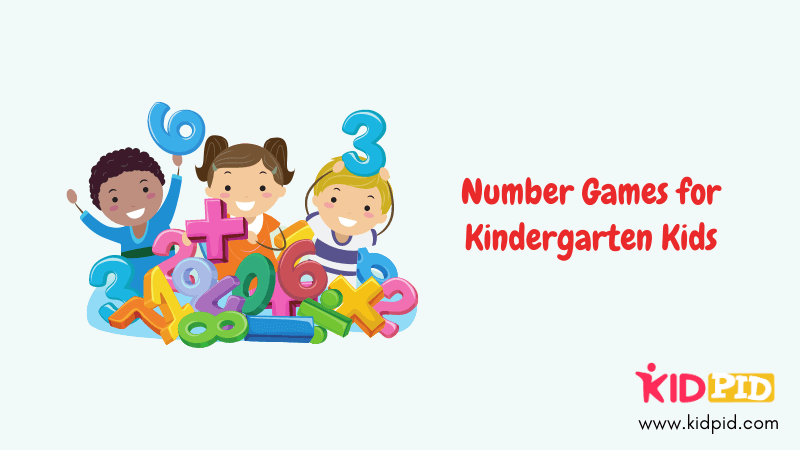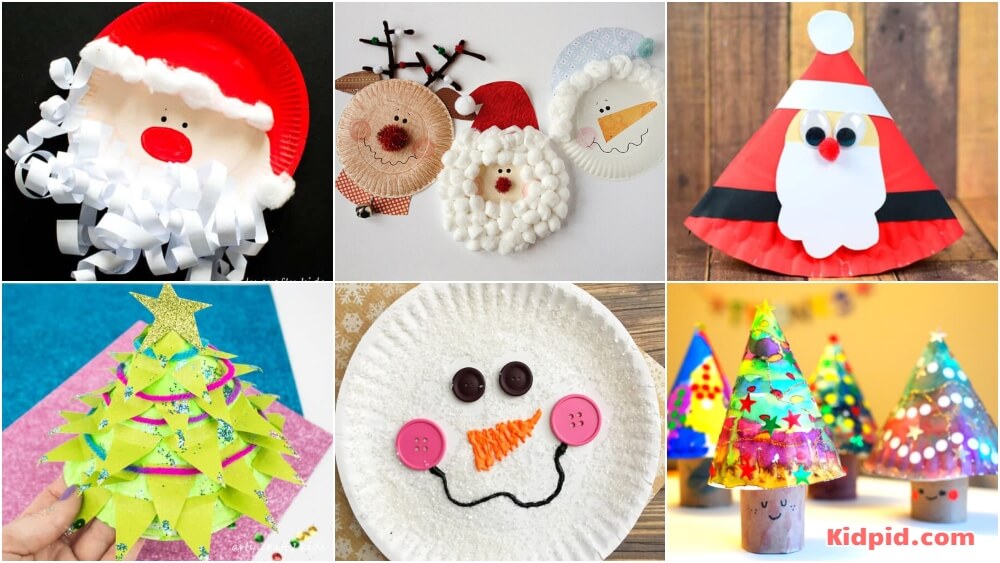Number Games for Kindergarten Kids

Boring lecture method where only the teacher communicates, where only kids are required to repeat after their teacher with whatever they say this system is close to being abolished. Gone are the days when students or kids weren’t given the opportunity to put their own thoughts, opinions, or queries, etc.
Today’s best method of learning comes from encouraging students to participate in games where they will be able to interact with each other. Interaction means communication between two or more people. Games nowadays are a very popular means of problem-solving. Children not can only play together but also can learn together as well and things learned trough this way stays in mind for a very long time.
We can also see that kids love to play meanwhile playing they also can learn, so different games basically number games are introduced and are discussed in detail below. Due to the hands-on nature of games, they help focus the children on the concepts of maths which every parent wants their child to practice.
Contents
Easy To Play Kindergarten Number Games For Kids
1. Five Of Each
A great short and extremely simple game that really helps to develop number sense in kids.
What materials would be required-
- A mat for each child,
- number cards 1-10,
- pattern blocks piled in the centre of the carpet or table.
Procedure or Process-
- 1st the teacher chooses a number and shows the children, in this case, we can assume 7.
- 2nd Now children will make designs with pattern blocks using 7 yellow blocks, then 7 blue blocks, then 7 green blocks.
- 3rd now children will show their partner or the child who is next to them what they made with pattern blocks.
- 4th now again this circle repeats with the teacher pick a different number.
2. Train Game
As the very name suggests, this game is a bit exciting than the previous one. Here kids will learn about numbers while making trains for themselves. Trian blocks will help them learn about numbers in a playful manner with imaginative skills.
Materials Required to create this Train Game-
- Wooden blocks- with variety of size available
- A ruler or something like that to make a starting line for each one of the children.
Procedure for making Train Game-
- Demonstrate it first.
- On the carpet or on the floor, each kid places the ruler, not for exactly for measurement but for drawing starting line
- Let suppose if the number is 3, the children will then make rows of 3blocks, each time with a totally different color, not the previous one until the teacher himself/herself says their kids to stop
- Then after this kids will identify and say which of their made trains is the longest and which of the train is the shortest
- Wooden colored blocks would be great as a math resource to use while playing kindergarten number games. It will excite the mind of kids and provide them with something to play. They are durable and can also be used for a variety of teaching purposes.
3. Bear Hike
This game can be based on whatever story you’ have read you to your kids. Basically, this game is based on a story like the bears and cats went for a walk. 2sat on the grass and 3sat in the sand. How many animals were there altogether?
Materials required to play this game:
- 5 bears, or cats, or tigers or elephants or panda or dogs or any other counters of your wish
- Now come up with 2 small different colored cards like red or yellow or mats for each child
Procedure: how to play this game inexact:
You are just required to make up a story or tell a story to them. Then they will follow their own counters and mats. This way they will grasp the concept of adding and subtracting at the same time.
Let’s take an example- The bears went for a walk. They went to a beach and also on the lovely green lawn ( at this time show them the blue and the green mats available with you). 4went into the waters (now according to the given data, kids will put their counters 4counters on the blue mat) and rest went on the grass available there. Now ask them this question how many are on the grass?” Let the students decide and just say the answers out loud.
Then again continue with, “Three of the bears were cold in the water and so they walked to the grass. How many are exactly left in the water? Now ask them this question. How many bears all together in the water and the grass?”
Keep this bear stories continuing until the children lose interest. And now let the children make up their own number stories.
Recording their games
After a few playtimes, guide your kids into recording their own thinking with letters, numbers, words, or pictures they can print. Like- children can color one side of a paper blue and the other green and then draw bears on each side.
4. Ready, Set, Go
This kindergarten number game is different from others as this one is a timed game that adds excitement to counting sets of numbers.
Materials for playing Ready set go:
- A mat for each kid
- Unifix® math cubes should be there
- A large wall clock is required
Procedure for Ready, Set Go:
- A group of 10 children not exactly 10 but approximately has to sit on the carpet with a pile of Unifix® math cubes in front of them.
- And half of the students from the class have to watch the second hand on the clock (assuming you possess a large wall clock as mentioned above in the materials list.
- And when the second hand of Clock points to the 12 (put a bright red sticker above the number 12 to make this process very easy not typical), they say, “Ready, set, go- make 5!” (ow whatever number you are working on)
- Now the other 5 students are required to build as many sets of five as they can before the second-hand point goes around the clock to the top again.
- And when it finally reaches the top, children will yell. “Stop! and after that, every one counts how many sets of 5 are there on the carpet available.
- Now let’s have the builders break their blocks apart for a minute after that quickly push them back to the center and even more quickly change the places with the timer kids
- Don’t focus on how many sets each student made or who made the most sets.
- Instead, go to them and help those who are making sets not correctly. The crucial thing is that the children are interested and are practicing making sets of a certain number and most importantly developing their number sense.
Number games are much more interesting than just involving kids with reciting numbers over and over again. We learn songs better than our chapter in the same way we learn things better when we take an interest in it. You can apply any of these games to increase the learning power of your kids. Zero boredom and lots of fun is what these games assure you of.






Responses